Keyword Research: What It Is and How to Do It Effectively
What is keyword research?
Keyword research is the process of discovering and analyzing the words and phrases people use in search engines. It helps you understand what your target audience is searching for, identify popular search terms, and optimize content. Collecting a list of keywords to target is also one of the first steps in website promotion.
Why do keyword research
Keyword research is vital to SEO. Here’s why:
- Keyword research helps you discover what your target audience is searching for so you can create content that addresses their needs and interests.
- Targeting relevant keywords increases your chances of ranking higher and leads to more organic traffic. Greater visibility means more potential customers to your site, leading to higher engagement and more sales.
- Knowing which keywords your competitors are targeting helps you adjust your strategy to stay competitive and identify keyword gaps to capitalize on.
- Keyword research can guide your content planning by revealing popular topics.
Where to use keywords
Here’s a list of instances where it makes sense to use terms collected during keyword research:
- Creating and improving site structure
- Understanding target audience interests (user intent)
- Creating page content
- Writing titles, descriptions, h1-h6 headings
- Optimizing images
- Selecting anchor texts for internal and external links
We cover the essentials of keyword research in our Academy’s SEO Basics Course. Check it out to learn essential techniques for finding keywords.
Important keyword metrics to know
Just targeting every keyword in your niche isn’t enough to achieve the results you’re looking for. Instead, you need to focus on the most relevant keywords for you. Select them after conducting a thorough analysis of the following key metrics:
- Search intent: Understanding the intent behind a keyword—whether it’s informational, navigational, transactional, or commercial—helps you target content that meets users’ needs.
- Search volume: The number of monthly searches a keyword receives shows its popularity. High-volume keywords are more competitive but can drive tons of traffic.
- Keyword difficulty: Keyword difficulty measures how challenging it will be to rank for a specific keyword. Higher difficulty often indicates that established websites are already ranking for it. This means competing for it will require more effort or a different strategy altogether.
- Relevance: Your keywords must align with your site’s content and audience. Irrelevant keywords may drive traffic but won’t lead to engagement or conversions as often.
- Trends and seasonality: Some keywords gain popularity at specific times, like holiday-related terms. Tracking trends and seasonality can help you capitalize on relevant topics during peak times.
- Competition: This metric is related to Google Ads. Analyzing how your competition is ranking for a keyword gives you insight into what they are targeting in paid search. It also helps you decide if it’s worth trying to rank for it.
- Cost Per Click (CPC): If you’re running paid ads, you can use CPC data to identify keywords with high commercial value. It also provides insight into the terms bringing in organic traffic.
How to conduct keyword research
The keyword research process can be divided into two steps: collecting keywords and refining your keyword list.
Collect keywords
The first step is to gather as many relevant keywords as possible. Below is a guide to conducting keyword research, where the process of gathering keywords is broken down into several key steps.
1️⃣ Define the seed keyword
Let’s say a company provides construction services. The main search queries (or seed keywords) in this niche will be “repair”, “construction services”, and “renovation work” to name a few. Each product/service category has its basic semantics, usually consisting of high-volume keywords.
Here’s a comprehensive guide on identifying seed keywords. It contains all methods for gathering as many seed keywords as possible, which can then be used to expand your list of phrases.
2️⃣ Use keyword suggestion tools
This is one of the quickest and most convenient methods for gathering keywords, as finding keywords manually can be time- and resource-intensive.
Start by pasting a seed keyword into a tool like SE Ranking’s Keyword Research tool. It will generate thousands of suggestions to help you expand your keyword list. You can also use it to analyze various keyword parameters like search intent, search volume, difficulty, and competition to evaluate keyword efficiency.
Keyword ideas are organized into groups for easier analysis. For a single seed term, you’ll receive a list of similar, related, low search volume (usually long-tail), and question-based keywords.
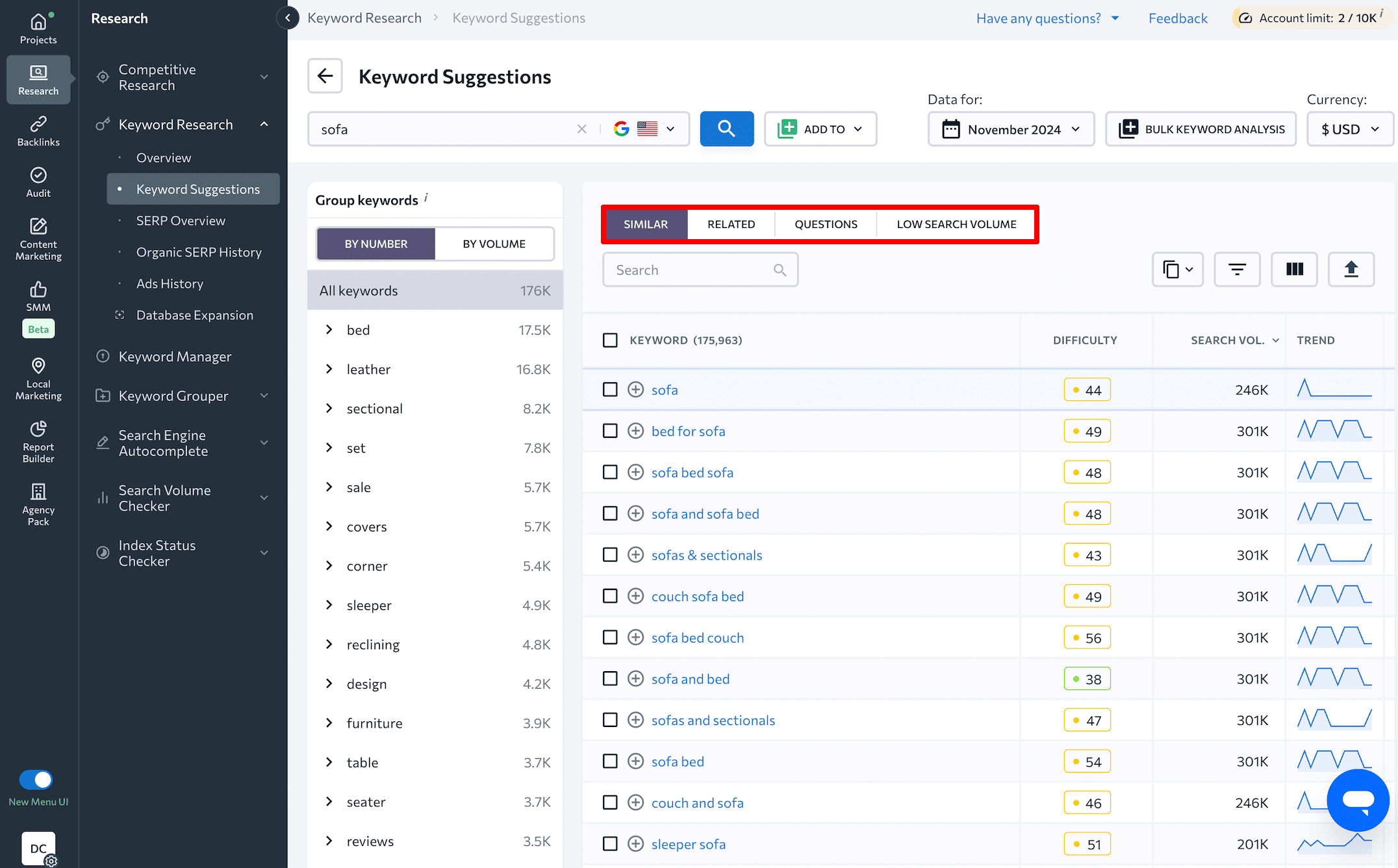
3️⃣ Expand the keyword list by combining terms
When you have a list of business-related terms, try matching them with common keywords to get different variations and then check their search volume. Expand your keyword list using the semantic matrix method, which uses qualifying words to search for search queries, including:
- Names of goods, service categories
- Name of brand, online store, company
- Commercial modifiers: “best”, “price” and so on
- Model descriptions, technical characteristics of goods
This is particularly useful for e-commerce or larger (programmatic) websites.
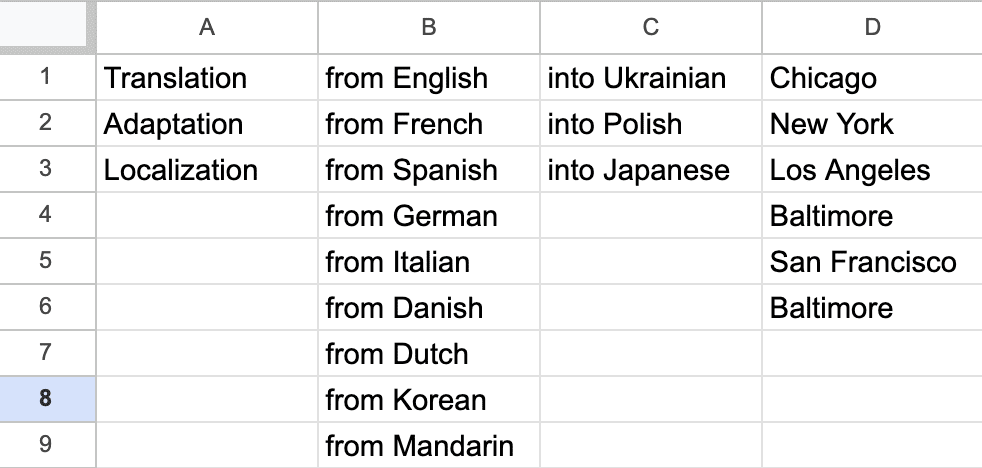
4️⃣ Find search engine suggestions
Long-tail keywords are crucial now that we live in a world with conversational search prompts. These specific phrases align with natural queries, helping content rank higher on Google and increasing its chances of being cited by AI systems. With lower competition and more targeted traffic, optimizing for long-tail keywords boosts visibility, authority, and conversions.
Find combinations of long-tail keywords by analyzing search engine suggestions or reviewing Google’s People also search for sections. To get the full picture, look at search queries on YouTube, Quora, forums, and other sources.
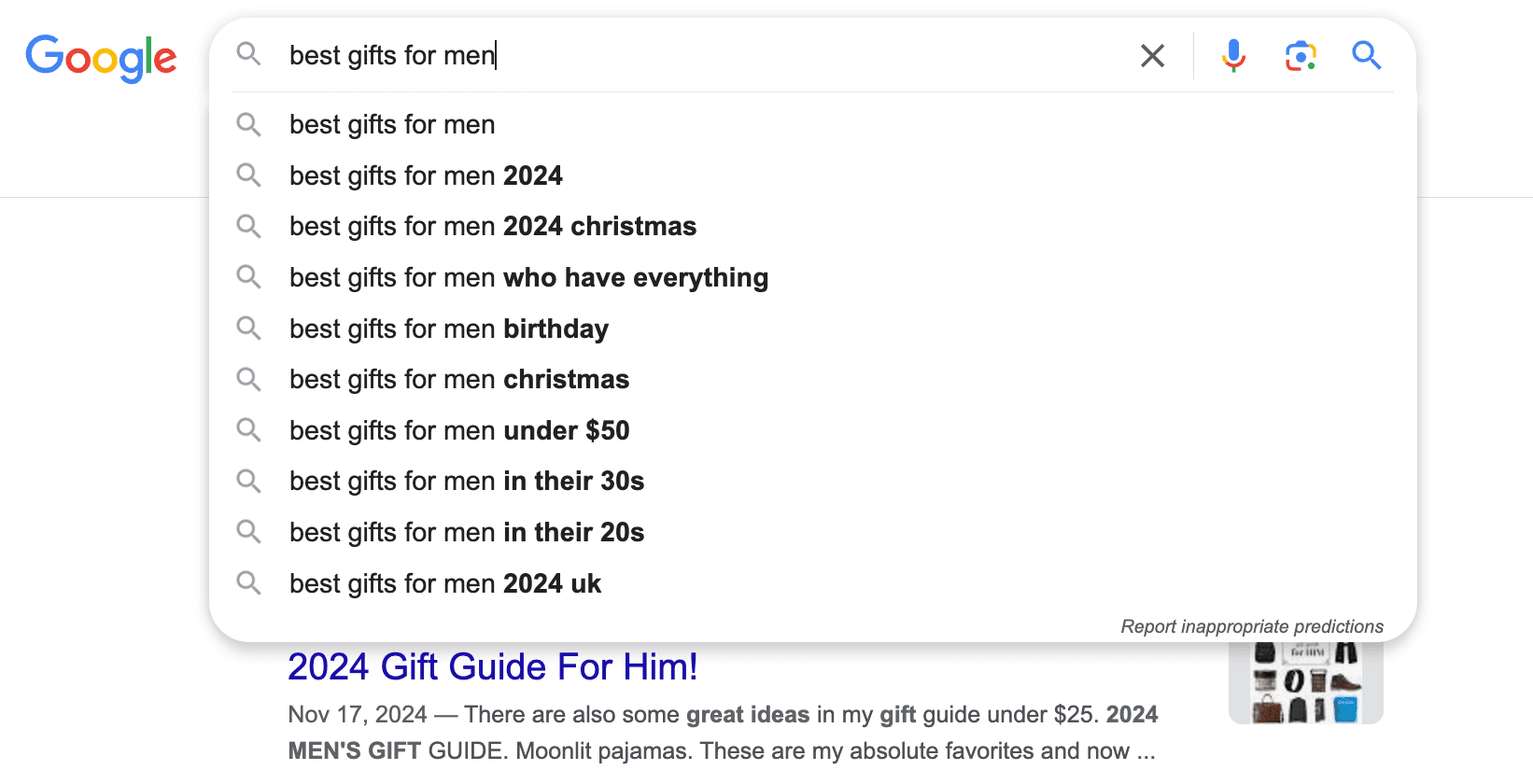
To automate this process, use SE Ranking’s Search Engine Autocomplete. Enter the search query you want suggestions for, and the tool will generate dozens of long-tail keywords.
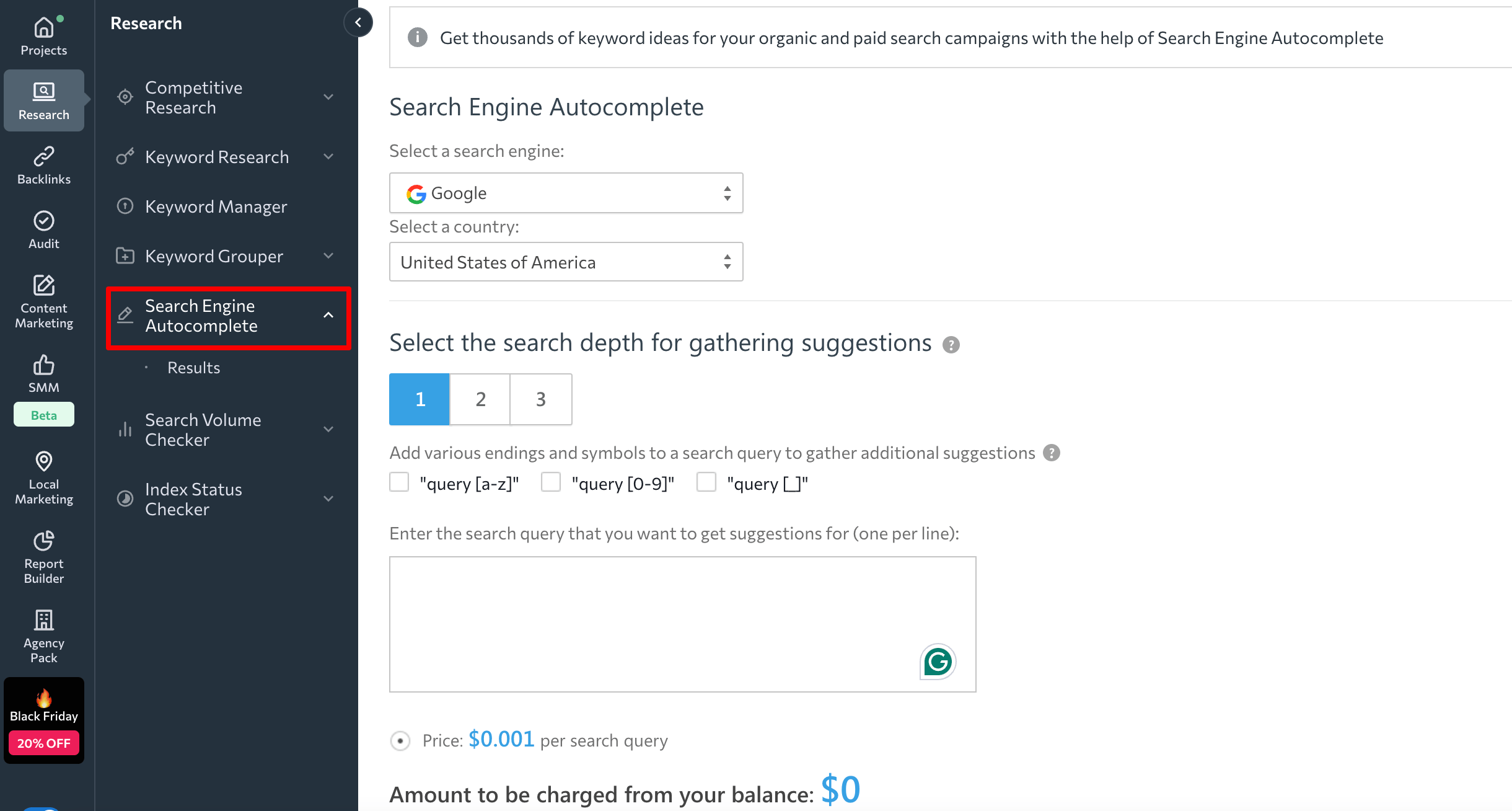
5️⃣ Analyze your competitors
Being aware of and targeting the keywords that drive traffic to your competitors will help with increasing your website’s search visibility in both organic and paid search. Begin by identifying niche/topic leaders.
- For new sites: Study the niche and its primary keywords to find out which sites are ranking for them.
- For existing sites: Find websites that rank for keywords similar to the ones your site targets.
SE Ranking’s Competitive Research tool shows you the keywords your competitors are ranking for. You can also use it to find keywords that are missing from your site, and analyze them using various parameters, eventually adding the best ones to your list.
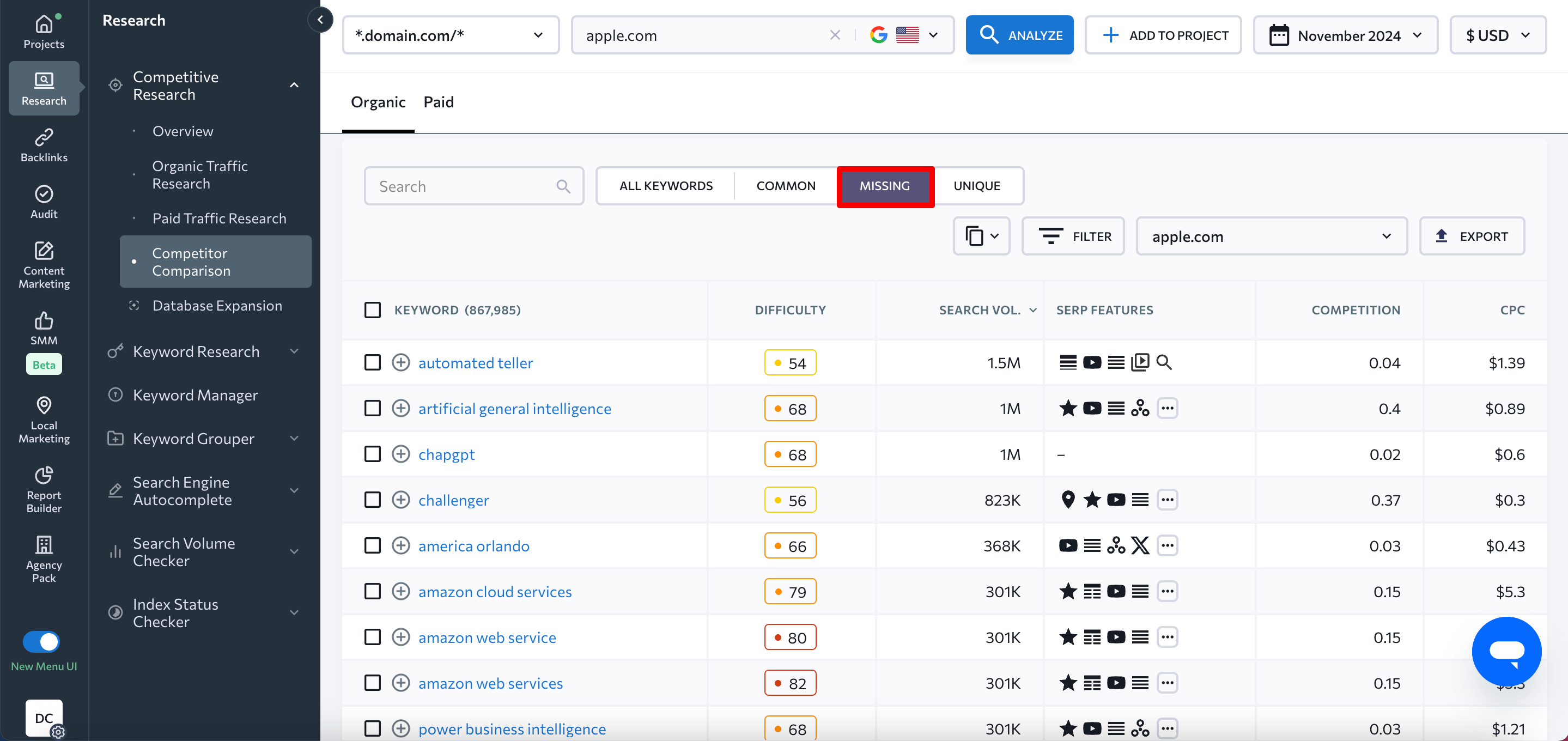
This article covers all methods for uncovering competitors’ keywords. Check it out.
Refine your website’s list of target keywords
The next step is to remove irrelevant keywords from the list. Let’s look at common search queries worth getting rid of.
- Unpromising keywords
Some keywords, even if relevant, aren’t worth the effort. Focus on more promising keywords and pay attention to the parameters described in the section above.
For example, filter out high-volume keywords with high difficulty. If your site is new, it’s likely not worth spending time on keywords with 10K+ monthly searches. These keywords are way too competitive. It’s also recommended to remove keywords that trigger AI Overviews and focus on keywords that are more likely to generate clicks to your website.
- Irrelevant search queries
Focus on the intent behind the keyword. Keyword search intent should also align with your business goals. If your goal is to attract traffic and nurture leads, target informational keywords. These keywords provide value and build trust. However, if your focus is on capturing hot leads who are ready to convert, rank for commercial keywords, which reflect strong purchase intent.
The bottom line is that if the keyword doesn’t align with your goals, remove it.
- Duplicates
When researching keywords for your niche, you’ll often find duplicate search queries across different seed keywords. Removing these duplicates will help you create a more focused, high-quality keyword list for your site.
- Products that aren’t available on the site
Search queries that mention non-existent product types or characteristics are ineffective for SEO because they contradict the buyer’s intent. Using them in your content reduces the URL’s click-through rate and increases its bounce rate.
- Name of competitor site/company/brand
When asked to provide results to brand-specific queries, Google and other search engines look for the most relevant web page. If you enter a query with your competitor’s name, Google, for instance, will likely rank it as #1 in organic search. You should only target competitor companies and brands if you have relevant content like reviews or comparison charts (brand 1, brand 2, etc.). This keeps your keyword targeting aligned with your site’s content.
- Misspelled phrases
Search engines can automatically correct keyword errors and typos. For this reason, they have no positive effect on SEO.
After refining your list to include only quality keywords, your next step is to figure out where they stand in your page hierarchy. Refer to this guide to learn how to do it effectively.
Conclusion
Your target keyword list serves as the bedrock for how you create and improve your site’s structure, content, and performance in organic search, among other marketing channels.
Here’s how to get a list of keywords your website will target:
- Analyze the website’s topic.
- Define the seed keywords for pages and categories.
- Collect as many search query options as possible.
- Optimize your keyword list by removing irrelevant queries and bucketing the remaining ones into groups.

